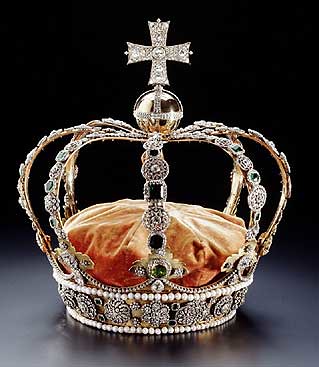What started as a horse race at the first royal wedding of the newly created Kingdom of Bavaria in 1810 has become one of the world's best known folk festivals: the Oktoberfest in the Bavarian capital Munich, which was opened yesterday. And before you ask, yes, the Oktoberfest actually starts in September, just as the October Revolution started in November.

 On 12th October 1810 Bavaria’s Crown Prince Ludwig married Princess Therese of Saxe-Hildburghausen (grandparents of the more famous King Ludwig II of Bavaria). To pep up the ceremony, a horse race was proposed and a race track built. Deutsche Welle gave an insight into the royal origin of what the French call "la fête de la bière".
On 12th October 1810 Bavaria’s Crown Prince Ludwig married Princess Therese of Saxe-Hildburghausen (grandparents of the more famous King Ludwig II of Bavaria). To pep up the ceremony, a horse race was proposed and a race track built. Deutsche Welle gave an insight into the royal origin of what the French call "la fête de la bière".Charging horses weren't the only spectacle at the ceremony, though. Munich came alive with music and decorations, and the rich feast provided by Bavaria's future king prompted archivists to describe the event as a full-scale folk festival. The horse race followed about a week later and drew 30,000 spectators. Visitors could catch a glimpse of the nobility, who entered in an elegant procession and went to a separate pavilion from where they would watch the race. They were followed by another procession of 16 pairs of children wearing the traditional attire associated with various regions in Bavaria. Each pair paid homage to Ludwig and his wife.
The festivities also served as a kind of image campaign for Crown Prince Ludwig's father, King Maximilian I. Napoleon had granted King Max I rule of Bavaria just four years prior, and there were still many foreign influences in the region which worried the nobility. The wedding and revelry were a way to strengthen solidarity in the region.
That may explain why similar celebrations took place the next year and onward. By 1819, the event was declared an annual festival. Today's Oktoberfest takes place on the grounds where the original horse race was held.
Well into the 19th century, the Oktoberfest was much more about the King's solidarity with the folk than a certain beverage with hops. Uncivilized behavior was left to the many animals at the event, including the racehorses, prize-winning bulls and rams, and the soon-to-be-plucked game that served as targets for the marksmen.
The first few carousels and swings appeared in 1818. By the late 1830's, beer and fish stands were on the lawn, but there were still few attractions and merchants. Even in 1881, records show that the festival offerings remained limited. There were 23 show booths, six rides and 12 gaming stands.
Nonetheless, the number of visitors was on the rise, with hundreds of thousands of annual guests on record in the 1880s. By then, Munich's population had increased six fold since the marriage of Crown Prince Ludwig in 1810.
An expanding rail network also made it easier for other Bavarians to visit the festival, and German unification in 1871 was enticing more and more people from beyond Bavaria's borders to visit the festival.
Oktoberfest's "big bang" came in the 1890's, along with electricity and a host of clever entrepreneurs. New rides, attractions, magic shows, menageries and wax figurine cabinets shot up all across the festival grounds.
At the end of the 19th century, Oktoberfest still wasn't a beer fest - in fact, some songs that encouraged drinking were forbidden. But beer and sausage consumption was growing, and the festival was extended to more than 14 days.
Oktoberfest's 100th anniversary in 1910 was held with the rather exaggerated motto: "The biggest Oktoberfest of all time." But it was true that the event had grown immensely and visitors would have scarcely recognized the Munich experienced by author August Lewald in 1835: "The moon hanging in a cloudless sky, the mountain tops ringed with haze, forests lying nearby and the thousand city lights burning alongside a few from villages beyond."
In the new century, the villages grew together and crowded out the forest. The thousand lights became 10,000, powered by electricity rather than gas. Those on the Oktoberfest lawn were drowned in the lights from the Ferris wheels, carousels and increasingly competitive beer halls.
The Kingdom of Bavaria sadly came to an end with the Revolution of 1918-19, and Oktoberfest brought revelers a glimpse of the good old days prior to the war and the loss of the beloved Bavarian Monarchy.




3 comments:
How very interesting. I'm always intrigued by the Bavarian ruling house due to the connection with Queen Elisabeth of Belgium.
On a side note, I heard recently that the ballet, SWAN LAKE, was inspired by the story of Ludwig II.
Queen Elisabeth of the Belgians was a remarkable woman. She is, however, no direct descendent of King Ludwig I. Her father was Duke in Bavaria, not of Bavaria.
Yes, of course, but they were related.
Post a Comment